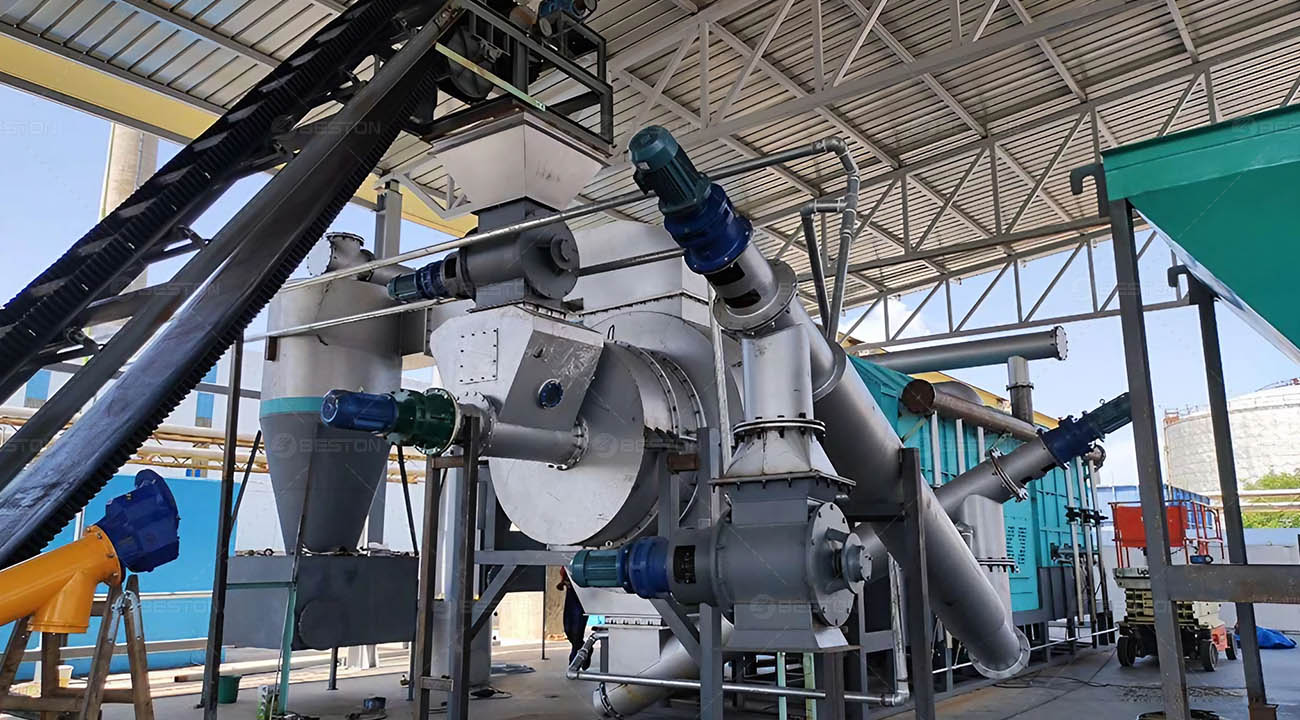Introduction
Biomass pyrolysis technology is ushering in a revolution in waste resource management. This article explores the significance of biomass pyrolysis, the workings of biomass pyrolysis plants, applications across various industries, and the challenges and prospects shaping its future.
Understanding Biomass Pyrolysis
Pyrolysis Process Explained
-
Heating and Decomposition: Biomass pyrolysis involves heating organic materials in the absence of oxygen, causing them to decompose into gas, liquid, and solid products in biomass pyrolysis plant.
-
Gas, Liquid, and Solid Products: This decomposition results in the formation of syngas, pyrolysis oil, and biochar, each with distinct applications and properties.
Types of Biomass Feedstock
-
Agricultural Residues: Crop residues, such as corn stover and rice husks, are valuable biomass feedstock for pyrolysis due to their abundance.
-
Forestry Biomass: Wood chips, sawdust, and forestry residues are suitable sources of biomass for pyrolysis.
-
Algae and Aquatic Biomass: Algal biomass, including seaweed, has potential as a sustainable source for pyrolysis.

The Working Mechanism of Biomass Pyrolysis Plants
Feedstock Preparation
-
Size Reduction: Biomass feedstock undergoes size reduction processes like chipping or shredding to ensure uniform heating.
-
Drying: Moisture content in biomass is reduced to enhance the pyrolysis process efficiency.
Pyrolysis Reactor
-
Temperature Control: Precise temperature control within the reactor is crucial for optimizing pyrolysis reactions.
-
Oxygen Absence: Pyrolysis takes place in an oxygen-free environment to prevent combustion in biochar production equipment.
Product Collection and Separation
-
Condensation of Pyrolysis Oil: The pyrolysis oil is condensed and collected for various applications, including biofuel production.
-
Collection of Syngas: Syngas, a mixture of hydrogen and carbon monoxide, is captured and utilized as a source of renewable energy.
-
Retrieval of Biochar: The solid residue, biochar, is retrieved and can be used for carbon sequestration and soil amendment.
Applications of Biomass Pyrolysis
Renewable Energy Production
-
Syngas Utilization: Syngas serves as a clean-burning fuel for electricity generation and heating applications.
-
Pyrolysis Oil as Biofuel: Pyrolysis oil can be further processed into biofuels, reducing reliance on fossil fuels.
Carbon Sequestration and Soil Amendment
Biochar, rich in carbon content, enhances soil fertility and acts as a carbon sink, mitigating greenhouse gas emissions.
Waste Management and Environmental Benefits
Biomass pyrolysis addresses waste management challenges by converting organic waste into valuable resources, reducing landfill waste and environmental pollution.
Challenges and Future Prospects
Technological Advancements
-
Catalytic Pyrolysis: Research into catalytic pyrolysis aims to improve product yields and quality.
-
Integration with Energy Storage: Biomass pyrolysis may play a role in renewable energy storage systems.
Sustainable Practices and Policy Support
-
Carbon Credits: Incentives such as carbon credits can promote biomass pyrolysis adoption.
-
Biomass Supply Chain Optimization: Developing efficient biomass supply chains is essential for sustainable pyrolysis operations.
Conclusion
Biomass pyrolysis technology is reshaping waste resource management by converting biomass into valuable products and renewable energy. With ongoing technological advancements and policy support, biomass pyrolysis is poised for a promising future, offering sustainable solutions for waste disposal, renewable energy production, and environmental preservation.

Comments
No comments yet. Be the first to react!